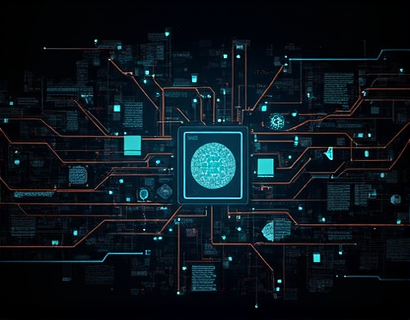AI-Driven Mental Health Insights: A Safe and Comprehensive Resource for All
In recent years, the integration of artificial intelligence in mental health services has opened new avenues for providing accurate, safe, and accessible information to a diverse audience. This article explores the emergence of an advanced AI chatbot designed to offer specialized insights into mental health services and industry trends. This innovative tool is tailored to meet the needs of professionals, students, mental health enthusiasts, educators, parents, and children, ensuring that the content is verified and appropriate for all ages.
Understanding the Need for AI in Mental Health
The mental health landscape is complex and ever-evolving, with new research, treatments, and industry standards emerging regularly. The demand for reliable and up-to-date information is critical, especially for those seeking to understand mental health services and how to access them. Traditional methods of disseminating this information, such as books, academic journals, and professional networks, often fall short in terms of accessibility and timeliness. An AI-driven chatbot addresses these gaps by providing real-time, accurate, and personalized insights to users across various demographics.
Features of the AI Chatbot
The AI chatbot is equipped with advanced natural language processing capabilities, allowing it to understand and respond to user queries in a conversational manner. Key features include:
- Comprehensive database of mental health resources, including therapist directories, treatment options, and industry news
- Content verification to ensure accuracy and safety, particularly important for young users
- Customizable responses based on user profiles, such as age, profession, and specific concerns
- Interactive elements to engage users and facilitate learning
- Multilingual support to reach a broader audience
Ensuring Safety and Accuracy
One of the primary concerns when using AI in sensitive areas like mental health is ensuring the safety and accuracy of the information provided. The chatbot employs several mechanisms to achieve this:
First, the content is rigorously vetted by a team of mental health professionals and experts in AI ethics. This ensures that all information is not only accurate but also ethically sound. Second, the chatbot is designed to recognize and respond appropriately to sensitive user inputs, directing users to professional help when necessary. Third, regular updates and audits are conducted to keep the database current and free from outdated or misleading information.
User Experience for Diverse Audiences
The chatbot is designed to cater to a wide range of users, each with unique needs and levels of understanding. For children and students, the chatbot provides age-appropriate content, using simple language and engaging visuals to explain complex concepts. For example, it might describe different types of therapy in terms that a child can understand, such as "talking to a special helper to feel better" or "playing games to learn coping skills."
For educators and parents, the chatbot offers more detailed information on how to support children's mental health, including resources for recognizing signs of distress and strategies for fostering a supportive environment. Professionals, including healthcare providers and mental health practitioners, gain access to the latest research, treatment protocols, and industry trends, helping them stay informed and provide the best possible care.
Interactive Learning and Engagement
Engagement is a key component of the chatbot's design. Interactive elements such as quizzes, polls, and guided discussions encourage users to actively participate in the learning process. For instance, a user might engage in a quiz to identify their stress triggers and receive personalized tips for managing stress based on their responses. These interactive features not only make the experience more enjoyable but also enhance the retention of information.
Building Trust Through Transparency
Trust is paramount when dealing with mental health information. The chatbot transparently communicates its limitations and the sources of its information. Users are informed that while the chatbot provides valuable insights, it is not a substitute for professional advice. In cases where more in-depth support is needed, the chatbot directs users to contact mental health professionals directly.
Additionally, the chatbot provides clear information about its development and the organizations involved in its creation. This transparency helps build credibility and reassures users that the information they receive is reliable and trustworthy.
Supporting Mental Health Awareness and Education
The chatbot serves as a powerful tool for mental health awareness and education. By making accurate and accessible information available to a broad audience, it helps break down stigmas associated with mental health issues. Users from all walks of life can gain a better understanding of mental health, learn about available resources, and feel more empowered to seek help when needed.
For mental health enthusiasts and advocates, the chatbot offers a platform to stay updated on the latest trends and research. It can also serve as a starting point for discussions and initiatives aimed at improving mental health support in communities.
Conclusion
The integration of AI in mental health services represents a significant step forward in providing safe, accurate, and accessible information. The AI chatbot described here is a testament to the potential of technology to enhance mental health support and education. By catering to a diverse audience and ensuring the highest standards of content verification, this tool helps create a more informed and supportive community. As AI continues to evolve, its role in mental health will only become more vital, offering new possibilities for those seeking to understand and improve their mental well-being.










































